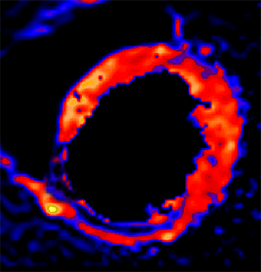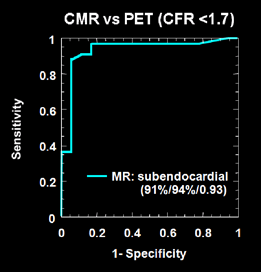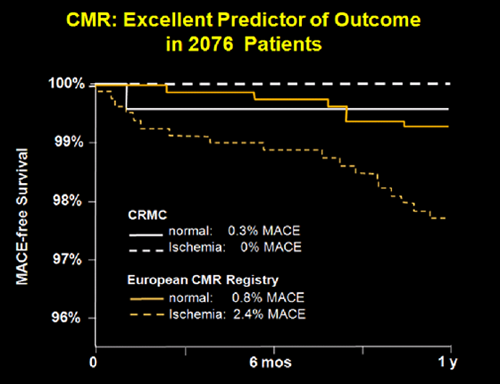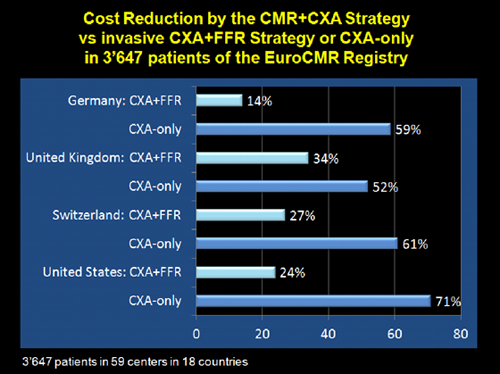Perfusion-CMR
A Success Story on the Transition from Bench to Bedside
This technique is now integrated into international clinical Guidelines. Its robustness in daily clinical practice is demonstrated in the large European CMR Registry and proof for cost-effectiveness is available.
Diagnostic performance
Perfusion CMR (J. Schwitter, MRM 1997; JMRI 1999; Circulation 2000) and myocardial tissue characterization (J. Schwitter, JACC 1997; J. Schwitter, Circulation 2001; P. Knuesel, Circulation 2003; D. Atar, JACC, 2009; R. Manka, JCMR, 2012) represent the main research activity of Juerg Schwitter.
The perfusion CMR technique allows to detect or to exclude coronary artery disease in patients as demonstrated in many single center studies (J. Schwitter, Circ. 2001, K. Bertschinger, JMRI 2001, S. Plein, J. Schwitter, Radiology, 2008 and Eur Heart J, 2008). Under supervision of J. Schwitter the largest multicenter trials available to-date demonstrate an excellent diagnostic performance of this technique (S. Wolff, J. Schwitter, Circulation, 2001; T. Giang, Eur Heart J, 2004; J. Schwitter, Eur Heart J. 2008, Eur Heart J, 2012, JCMR 2012).


Pronostic Power
The studies on diagnostic performance were followed by studies demonstrating the excellent prognostic power of perfusion-CMR to predict outcome (death and non-fatal myocardial infarction etc).
Other groups and that of the CRMC produced a large body of evidence with regard to the prognostic performance of perfusion CMR, particularly by analyzing the data of the large European Registry of Cardiovascular MR currently holding 59 participating centers in 18 countries (O. Bruder, J. Schwitter et al, JACC 2009 and JCMR, 2013).

Guidelines
These data mentioned above together with a large single center study (CE-MARC, Greenwood, Lancet, 2012, performed in UK) set the basis for including perfusion-CMR into the European Guidelines on Heart Failure (Task force member: J. Schwitter, Eur Heart J, 2012) and on the management (Eur Heart J, 2013) and revascularization (Eur Heart J, 2014) of stable coronary artery disease.
Evaluation of the economic aspects
Finally, the CRMC research activity focused on cost-effectiveness analyses demonstrating substantial cost savings of MR-based work-up algorithms in comparison to invasive strategies to detect or exclude coronary artery disease (Moschetti, JCMR 2012 and 2013). The latest analysis of the European Registry data includes 3’647 patients with suspected coronary artery disease and demonstrated cost savings of up to 27% vs an invasive strategy for Switzerland (Moschetti, JCMR 2015, in press).
A specific cost effectiveness analysis of the work-up of suspected coronary artery disease in Switzerland is under way (presented at the annual Scientific Meeting of the Swiss Society of Cardiology, Pletscher et al, 2015).

Publications
A total of 73 articles were published as a result of the CRMC research activity since its foundation in 2009.
Contacts
Director CMR Center
Rue du Bugnon 46
1011 Lausanne



